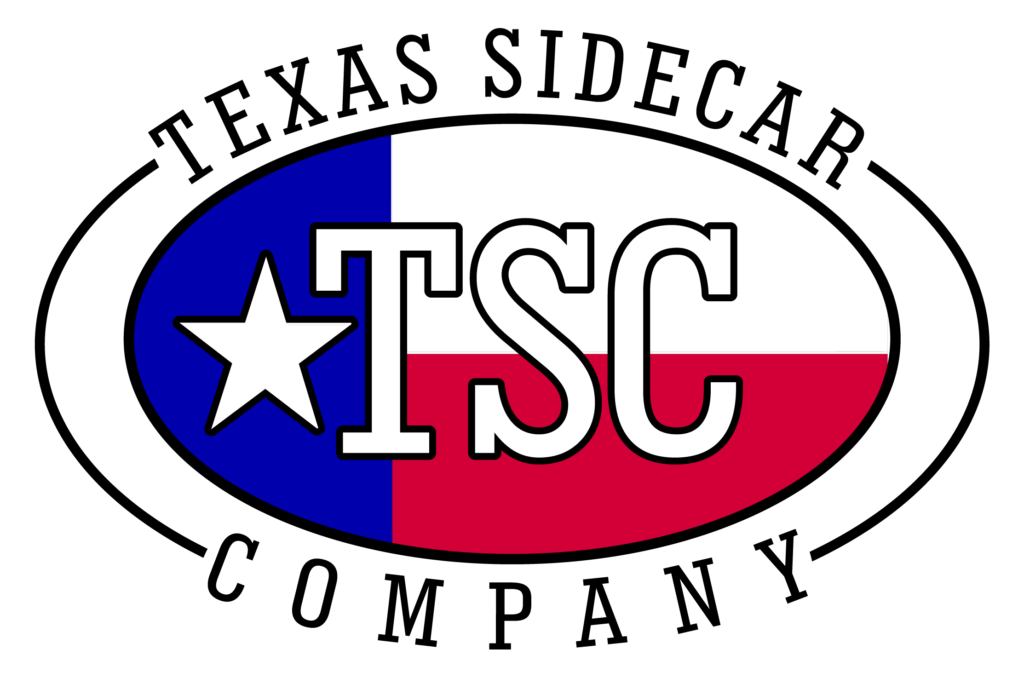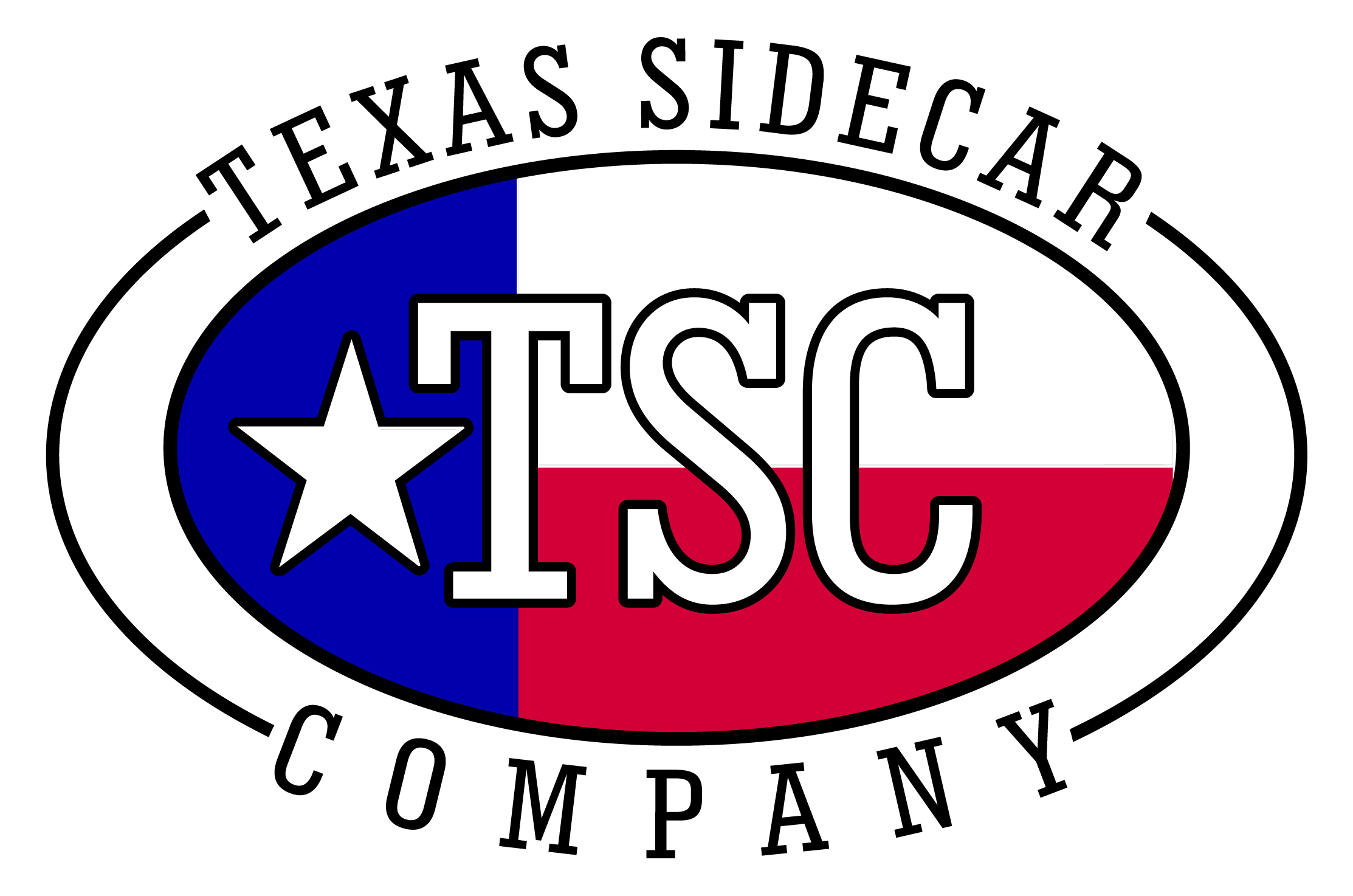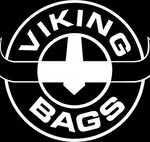Sidecar FAQs
At Texas Sidecars we answer a lot of questions about sidecars and sidecar driving. Below we have listed a few of the most frequently asked questions. If you don’t see an answer to your sidecar question here, then drop us an e-
I believe the bottom line answer to this question is: it’s a personal decision. We sell and install both so we see the benefits of each. Here are some points to consider
- Trikes steer –
and stop – symmetrically while sidecars handle asymmetrically - Sidecars generally have a lower base price than trikes
- Trikes are usually easier to service as you can access both sides
- Sidecar rigs can usually carry more passengers and/or gear than a trike
- Trikes don’t need the alignment sidecar rigs require during assembly
- Sidecars can be removed and reinstalled fairly easily for two-
wheel riding or transport - Trikes are not affected by loading like a sidecar rig can be
- Sidecars can be moved from bike to bike and are not (usually) motorcycle-
dependent if you want or need to sell it
SIDECARS: The cost of the sidecar itself is only a part of the total cost of building a rig. Along with the cost of the sidecar, you have sales tax, crating, shipping, customizing, a subframe, and mounting. If you are building a dedicated rig, you could also have tires, wheels, and a different front end. So, there’s lots more than just the couple of thousand the sidecar costs.
Here’s a minimum (for Spring, 2007) for a new sidecar from us: our low-
If you live in Texas, add about $300 for taxes. Subframes and custom mounts (depending upon your bike) range from $200 for most bikes to a high of $600 for a couple of other examples. Installation by a professional usually begins at $500 and can go to $700 or more. If you just have to have that custom paint, put another $750 on it. You’ve just bumped the low-
TRIKES: Trikes, like sidecars, have a number of costs above and beyond the base price, but most are in accessories. A Champion trike kit for the Honda GL 1800 for example lists (Spring 2997) for $6995, with crating adding $150 and shipping around $200. Paint is a must on trike kits, so add around $675 and installation runs around $1500. We strongly suggest the EZ-
We have a showroom now and are happy to have you drop by. Please call ahead (833-
One question we are asked frequently concerns installing a lightweight sidecar on a heavy bike. Specifically, we are asked “Can I put a Velorex on my big Harley” often but occasionally someone will find an old Spirit Eagle and want to mount it on a large bike. I do not recommend combinations like this nor will we mount them in our shop. I believe that too much stress can be put on the lightweight axles, frames and mounting parts – arms and clamps – and this could cause them to fail. While I personally do not know of anyone having an axle snap or a mount break, I have seen some parts stretched to the point of near-
The answer to this question depends on your abilities more than the bike and sidecar you have chosen. Connecting the sidecar to the mounting brackets on the motorcycle is pretty much the same for all sidecars. Installing the mounting brackets on the motorcycle is different for each make and model bike and scooter.
Installing the mounts on the Kawasaki Vulcan series is relatively easy. At the upper front and lower rear right-
The new Honda Silver Wing super-
If there is a subframe available for your bike, this can make the installation go very smoothly as much of the engineering work has been done. Smoothly and quickly, however, are not the same. Both the Harley Sportster and the Gold Wing 1500 use a subframe. The HD subframe takes about a half-

The following bike-
Universal
Mounting
Kit
Two clamps with rod eyes and two clamps with clevises.
Kits listed here include installation instructions specific to your bike.
BMW
/5. /6, /7
R80, R100
K75, K100
Guzzi
Ambo, Eldo
Cal II, Cal III
Bassa, Jackal
If your bike is not listed here, please contact us. New mounts are being added frequently.
Honda
CX 500/650
CB500, 750,900, 1000
Magna
Pacific Coast
Shadow 750, 1000
Helix
Silver Wing
GL 1000, 1100, 1200, 1500, 1800
Valkyrie
VTX 1300 & 1800

Harley
Sportster
FLH
Softail
Kawasaki
Vulcan 750, 800, 1500, 1600
Suzuki
Bandit
Burgman 650
GS750, 8500
Intruder 700, 800, 1400
Intruder 1500
Yamaha
Majesty
V-
Midnight Star
Triumph
New Bonneville
New Thunderbird



If you choose to, or have to, use a “universal” mounting kit, the entire installation process may be more difficult, may take more time, and may incur added expenses.
As I stated initially, the bike and sidecar are part of the answer. Your mechanical ability is the other part of the equation. Recently, we sold Ranger sidecars and mounting kits to two different customers with exactly the same model bikes. One customer took four and a half hours to install his sidecar. The other customer worked on the installation for days and days and finally went to an experienced sidecar installer to have the mounting done. Both customers claimed to have average mechanical skills.
To help give you an idea of what it takes to mount one of our sidecars, we have included a sample Installation Guide. Click here to review the Guide.
In summary, the difficulty of installation differs by make and model bike, make and model sidecar, your skills and the tools and equipment at your disposal. In general, I believe most people, if they have some basic mechanical skills, can install their own sidecars. Probably 75% of our customers do it themselves. Do some investigation here first. Move slowly and do it right. Remember, you will only have to do it once!
Usually, they are. Most sidecars have four mounting points with bolts in them and a wiring plug. Some have a brake to disconnect, and if it is hydraulic and tied into your bike’s braking system, that’s a little trickier. There’s a few things to consider about taking the sidecar on and off — if you have the sidecar on the bike very long, your tires are going to wear just a little flat mostly in the middle. If you have not put special sidecar tires on your bike, then it will handle poorly with the touring tires worn flat. If you have put sidecar tires on your bike, then it will handle even more strangely (possibly dangerously) as a two-
Along with: Do I need leading link forks? or Do I need an altered triple tree? This is another one that is a bit difficult to answer. I have had a number of sidecar rigs with standard forks. They handled fine — a little work, but ok. None were terribly large or pure cruisers with more than a little trail. I’ve had rigs with leading link forks and the only way to describe the difference is that it is similar to a car with power steering and one without. I have a mini-
If you decide you like sidecaring and are committed to it, make the investment for either leading links or an altered triple tree. It will make the rig handle so much better and easier you won’t know what you did before you changed over. (Read some of the articles on steering geometry if this question doesn’t make sense to you now. There are some good articles and links at www.sidecar.com.)
We recently had the triple trees on our 1990 Goldwing altered by Pete Smith at SideEffects in Canada. I called him the day after I installed them and told him “I knew they would be good – but I didn’t know they would be GREAT!” They are. Our Wing with a two-
My experience has been that many bikes have a small amount of head shake and is nearly impossible to get rid of it. Every vibration in the bike and sidecar manifests itself in the only part of the rig that has any flexibility and the ability to “vibrate” in sympathy.
That being said, to eliminate most, if not all, of the front end shake in a rig, there are three things to check and do:
1. Make sure everything is tight. This means ALL connections and ALL the components of the motorcycle and sidecar. Check the swing arm bushings/bearings on the bike and sidecar. Check the wheel bearings and axle spacers and nuts for play. Check the engine, transmission, frame mounts, joints and connections. Make sure nothing is loose.
2. Make sure all three wheels are balanced. This may be a difficult task, but have all three wheels checked by a professional shop. You may need to have the sidecar wheel checked by a motorcycle shop or you may need to have it checked by an automotive wheel specialist – but have them checked. You may find that having only the sidecar wheel re/balanced takes care of the problem. I have seen a number of instances where this was the major culprit – even when the wheel was supposedly balanced. If it is an automotive type wheel, make sure the red or yellow dot on the tire is lined up with the valve stem hole on the rim. Just because it is new or has been balanced doesn’t mean it is right.
3. The last thing to check and/or do is probably the most difficult and the one that fixes most head shake. Check the “preload” on the triple tree bearings. By this, I mean that you need to lift the front end of the bike off the ground and determine if the forks are loose in the steering head bearings. You can put a small jack under the front of the motorcycle frame or engine and let the rig rest on the sidecar wheel and the motorcycle rear wheel during the check. If you can grab the front wheel and push and pull it back and forth in a front-
If the front forks simply “flop” from side to side, you still have a problem though not as serious. The front forks need to have the “crown nut” or whatever device is holding the triple tree bearings in tightened down. This is not necessarily the top nut on your triple trees – it may be below the top triple tree and difficult to see or access. This crown nut needs to be tightened to a point where there is a slight drag when you move the handlebars back and forth. You may find that it takes a special spanner or socket to tighten down the crown nut. (In the case of my GW 1500, I had to take a large socket – over 2 inches I believe – and cut square teeth in it to tighten the special nut.)
One word of CAUTION –
Some experts will recommend about 5 foot pounds greater torque on the crown nut than the factory calls for. This preload is typically not enough to harm anything or wear out the bearings, but will almost always keep the front end from flopping back and forth or shaking as you go down the road.
They’re nice to have. Think about it. You have a hundred pounds or so hanging on the side of your bike with a hundred pound or so passenger. When you hit the brakes on your bike, the sidecar wants to keep going. Slowing it down along with the bike would be a good thing. Modern bikes with good braking systems will take care of the extra weight. A little practice on the driver’s part and the pull is very controllable. Many, if not most, of the sidecar rigs I have seen do not have brakes or do not have them operational.
We receive a number of calls from people who have bought a used sidecar – one brand or another – and are looking for mounting parts or installation. If you are looking for a used sidecar, here are some things to keep in mind and to help make your purchase a good deal:
- Try to buy a sidecar currently being manufactured. It is a lot easier to obtain parts and pieces for Texas, California, Champion, Ural, and Velorex sidecars than it is for Hitchhiker, American Eagle, Spirit Eagle, or some unknown brand.
- Try to obtain as many of the bits and pieces as you can. Little things like mounting strap clamps can cost $50 to $95 new. No sense buying new parts if the old ones are good.
- Inspect the sidecar thoroughly. Many of the used sidecars I have seen have had the suspension pieces worn out. Replacement parts are expensive. Grab the wheel at 3 and 9 o’clock and shake it in and out If it moves, something is worn out.
- Make sure the sidecar will fit your bike. Some of the larger bikes with long wheelbases require sidecars with long frames – frames with the mounts further apart. If you buy a short chassis sidecar for a larger bike, or vice versa, it could be difficult and/or expensive, if not impossible/impractical, to mount. Make sure you are buying something that will fit.
New struts, mounting arms, and mounting pieces can run as much as $1000.00 or more, and having the sidecar installed can run another $500 – $750. The used sidecar can still be a bargain, depending upon what you find and what you pay for it, but if an additional $1500 is going to make the whole deal a bad one, you should know that going in.


